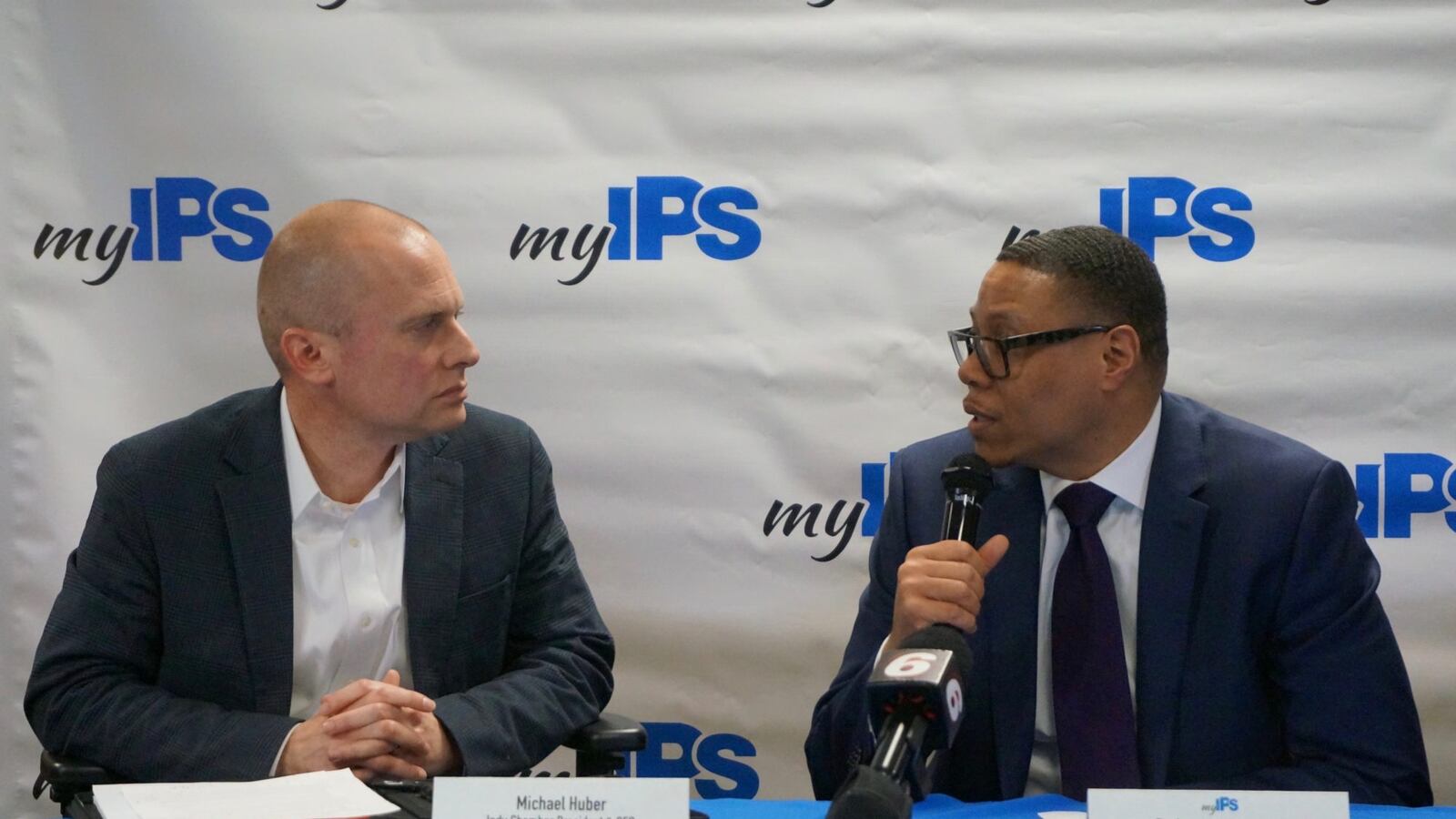The Indy Chamber has a host of ideas for how Indianapolis Public Schools could cut costs as leaders prepare to ask voters to increase school funding. But the group also says the district should significantly increase pay for principals and teachers.
During a presentation to the school board Thursday that previewed some of the findings of an ongoing analysis, consultant Michael Brink said there are several ways the state’s largest district can potentially save money, including relying more on public transportation for students, reducing spending on employee health care, closing schools, and shrinking the central office.
Brink, a senior director from Faegre Baker Daniels Consulting, is working with the chamber on the analysis. He acknowledged that cuts would be painful for the district, but he said they would help achieve long-term fiscal stability. “The things that we are going to include in our report are not easy, but they are necessary,” he said.
If the district makes enough cuts, it could potentially generate a surplus without a tax increase, Brink said. But the chamber also supports a substantial increase in pay for teachers and principals.
“That is a rock-solid commitment,” said Brink. “This is not just an efficiency. It’s not an austerity exercise. It’s a way of finding opportunity to drive more dollars into the classroom.”
The presentation was the latest milestone in Indianapolis Public Schools’ campaign for more money from taxpayers. Last year, officials unveiled a plan to seek nearly $1 billion from voters in two referendums in May. But when the proposal failed to win strong support, the district went back to the drawing board and agreed to partner with the Indy Chamber to craft a new, likely smaller, proposal that is expected to appear on the November ballot.
The chamber plans to release a full analysis of district finances in the coming weeks.
“We’ve identified dozens of recommendations that add up to hundreds of millions of dollars in potential savings and a new financial model for IPS,” said Chamber President Michael Huber in a statement. “A strong business climate demands high-performing schools and competitive tax rates, and we’re close to delivering a realistic blueprint for achieving both.”
The district spends about 47 percent of its budget in classroom, the report found. The remaining 53 percent of spending goes to capital needs and facilities, debt service, transportation, administration, school lunch, and other areas.
The district recently raised teacher pay, particularly for new teachers, but average pay in Indianapolis Public School is still relatively low compared with other districts, Brink said. That’s one reason the chamber hopes to increase educator pay.
Indianapolis Public Schools had the highest spending in Marion County at $15,248 per student in 2016-2017, according to the analysis. That’s nearly $2,000 more then Fort Wayne, which spent $13,368. Fort Wayne is a comparably sized district, but it has fewer high-needs students, including those from low-income families and English-language learners.
The district is asking voters to raise money for both operating expenses and building improvements.
Earlier this month, the school board approved the first of two referendums: a significantly scaled down plan to ask voters for about $52 million to pay for improvements to school buildings, particularly safety features such as new lights, classroom locks, and fire sprinklers.
But the bulk of the increase will likely be in the second referendum, which will be dedicated to operating expenses, such as teacher salaries. Details have not yet been released on that measure. The board will hold a July 17 hearing on it.
The takeaway from Huber’s presentation will likely be painful for school district leaders: As they look to close the budget deficit — which is expected to reach $45 million next school year — Indianapolis Public Schools leaders are facing tough choices.
Some areas where district spending is unusually high reflect the administration’s priorities. The district’s emphasis on letting families choose schools, for example, has driven up the cost of busing. Even among districts that offer lots of choices for families, the district has high spending on transportation, according to the chamber. It makes up about 10 percent of district spending.
In part that’s because Indianapolis does not have good enough public transportation for the district to rely on city buses for students. At the same time, the district offers generous busing as a way to make magnet schools accessible to families with limited transportation.
Superintendent Lewis Ferebee said the chamber’s analysis is helpful, but the district must still look at whether the potential cuts are realistic. The district could plan for more students to use the city’s expanding bus system, for example, but it is not yet able to transport significant numbers of students.
“We are banking on a system to be much more robust that what it is today,” Ferebee said. “How much of that do we want to build into projected savings? Those are things that we have to think about.”

